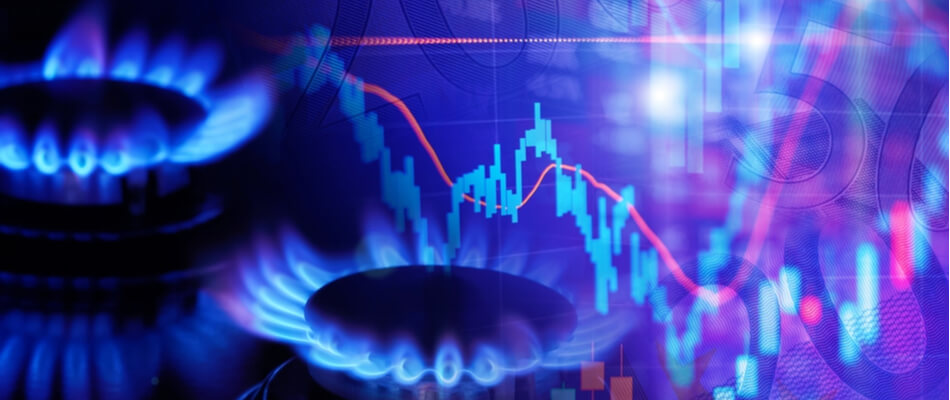Natural gas as an investment
Natural gas is a fossil fuel, and is present in many places in the world. It was created millions of years ago, but is still used for all sorts of things today. But did you know that natural gas is also a very suitable investment product, also to expand your investments?
Nowadays, investors are increasingly looking for new, interesting investment products. Since the demand for natural gas will continue to increase in the future, it is useful to know the characteristics of this raw material. The cost price of natural gas has large, but regular fluctuations. That is why it is wise to invest in natural gas when the cost price is low. However, this does not necessarily mean that you have to have a large starting capital. To know how you can make the best choices for you as an investor, you can read more about the most important information when it comes to investing in natural gas here.
How do you invest in natural gas?
Actively investing in the commodity
For example, investing in natural gas can be done directly via the stock exchange, by means of a contract on the raw material with a broker . Of course, it is important to take into account the transaction costs of the investments. Which usually involves a small amount. The amount depends on the frequency with which you invest. An active investor will pay higher transaction costs than someone who invests less often in natural gas.
Investing in natural gas with shares
Another option is to invest in companies that earn money through gas extraction, which reduces your risk. Think of companies such as Shell and Gazprom. Because investors often invest in these types of organizations for the long term, the stock prices of natural gas companies are more stable. Although there are usually fewer fluctuations in this market, the best time to invest is when the gas price is high.
There are various natural gas shares that you can invest in as an investor, for example: SandRidge Energy and McMoran Exploration Co. It is important for investors to be aware of the various influences per company, so take a look at the organizational data. These results can influence the price of natural gas as well as the price of your chosen company.
How is the price of natural gas determined?
Natural gas is valuable for both individuals and companies. The Dutch government is currently working on a natural gas-free Netherlands. Although natural gas is sometimes still used for cooking or for generating electricity at various power stations. If you want to know whether it is a good idea to buy natural gas for the long term, it is wise to look at the global demand for this raw material. Because even if the demand for natural gas is decreasing in the Netherlands, this does not necessarily mean that the price in large countries such as China will not increase.
The global economy is related to the price of natural gas; when the economy is doing well, there is more demand for natural gas and vice versa. However, the weather also affects the price. During cold winters, more natural gas is used to heat homes, and the use of electricity is also needed in hot summers, to cool homes. The dollar price also affects the price of natural gas; when the dollar is falling and cheaper, the price normally rises, because natural gas is cheaper outside the US.
The above summarized brings you to the following conclusion; the combination of a good global economy, the balance between warm and cold weather and a lower dollar price are causing the price of natural gas to rise. Although these are not the only factors, natural gas is a good investment product to invest in.

How do you actively invest in natural gas?
There are considerable fluctuations in the cost price of natural gas. Nevertheless, you can buy a lot at once when the price is very low, without losing a huge capital. The cause of this is a lever, with which you as an investor with a low deposit can open many positions on natural gas.
You always actively invest in natural gas contracts, which means that you have to keep a close eye on what the natural gas price is doing. By closely following the price of natural gas during an explosive price increase, you can better respond to the best moments to sell your natural gas. A handy tip is to use a ‘ stop-loss ‘ for this. This means that you can automatically sell your natural gas contracts or shares at a certain value. The stop-loss prevents you from losing your entire capital on your investment.
Investing in natural gas in uncertain economic times
When the economy is in uncertain times, most investment options have greater risks. On the other hand, investing in natural gas can still be a good thing. However, this does provide more variation in your investments when you invest in natural gas in a less stable period. Investing in natural gas is certainly an interesting option for both private investors and companies, it is experiencing significant growth just like gold.
For example, if you buy natural gas for $5 as an investor, you can sell your investment for three times that amount by actively trading. The regular fluctuations of this investment product make many things possible. However, it is good to remember that you may not see your investment back immediately. The price increase of natural gas is sometimes difficult to predict.
Compare brokers and start investing in commodities
Are you excited about investing in commodities, such as natural gas, after reading this article? View all brokers that offer investment options on commodities and find the broker that suits you best!